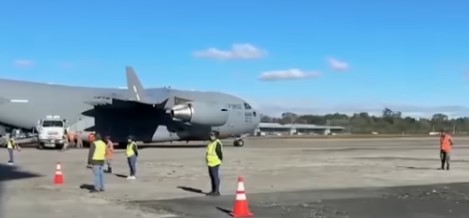Newsman: White House press secretary Karoline Leavitt made an announced just four days after President Donald Trump returned to office, “Deportation flights have begun. President Trump is sending a strong and clear message to the entire world: If you illegally enter the United States of America, you will face severe consequences.”But a month and a half after the White House announcement, the pace of deportation flights is a bit slower than those of his predecessor, former President Joe Biden. Also, the number of immigrants expelled through flights has decreased and the government has stopped using military aircraft, which according to immigration experts was more expensive and inefficient.
The decline in flights and deportees is partly due to a drop in border crossings since Trump took office, which has left immigration authorities with fewer people eligible for “expedited removal,” which is used to expel those caught at the border or in an area within 100 miles of the border, and within 14 days of arrival to the country.
According to the Department of Homeland Security, the government recorded 8,347 arrests of immigrants crossing illegally from Mexico in February, the lowest number in 15 years.
The findings are based on a Noticias Telemundo analysis of data on deportation flights and interviews with Central American government officials and experts who have analyzed these immigration operations in recent years.Countries that received more deportation flights haven’t seen major changes and predict that 2025 will end with fewer deportees than previous years.
President Trump administration began using U.S. military planes to reinforce his deportation operation, although Immigration and Customs Enforcement (ICE) has been deporting immigrants on private airlines since 2010.
In early March, the Defense Department suspended the use of C-17 jets to transport undocumented people to the U.S. base at Guantanamo Bay and other countries.
In total, the Trump administration conducted 29 military flights to seven countries, mostly Guatemala. But those flights ended up being more expensive and less efficient than the commercial flights usually contracted by ICE to expel migrants.
Data shows that in February, 128 flights with deportees took off, including 19 military flights. That figure is lower than Immigration and Customs Enforcement’s 137 deportation flights in February 2024.
The main destinations of February’s deportation flights were Honduras and Guatemala, countries that for years have received weekly flights with deportees.
For the analysis, Noticias Telemundo developed a database of Trump administration deportation flights based on news reports, official government information, websites that record aeronautical information and data collected by Thomas Cartwright of the group Witness at the Border, which has tracked U.S. deportation flights since 2020.
In Latin American countries such as Guatemala, Honduras and Ecuador — which receive the most deportation flights — authorities say they have not seen major changes in operations compared to previous U.S. administrations. They even predict that, if the current trend of the Trump administration continues, 2025 would end with fewer flights and fewer deportees.
Consulted by Noticias Telemundo, the directors of both nations’ migration institutes said that so far the only difference in the operation compared to previous administrations was the use of military aircraft. Otherwise, the pace of deportation flights remains about the same, they said.
The decrease in deportation flights took place as Trump pressured countries such as Panama, Honduras and Costa Rica to accept planes with deportees of other nationalities and the administration used military aircraft to carry out the deportations.

